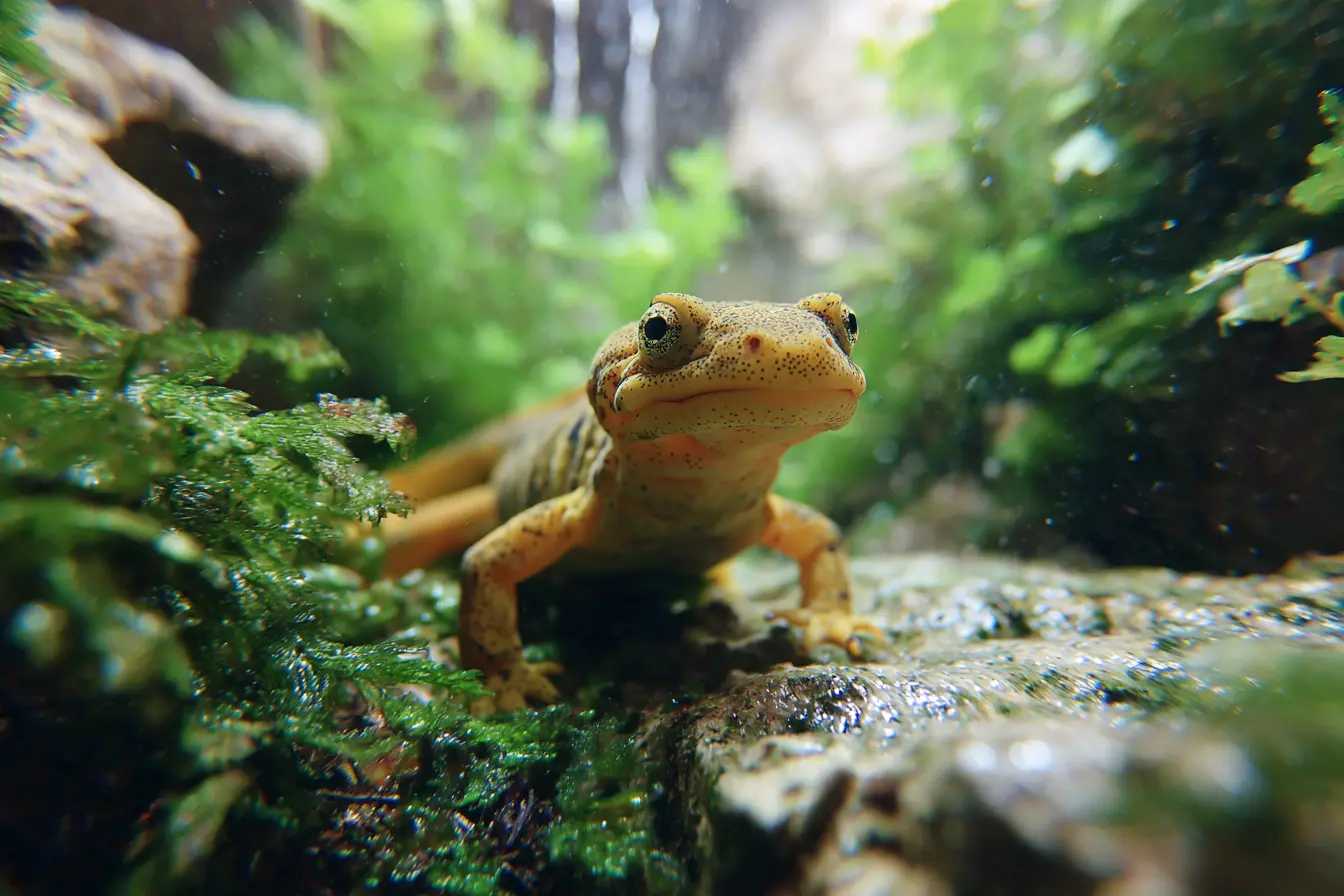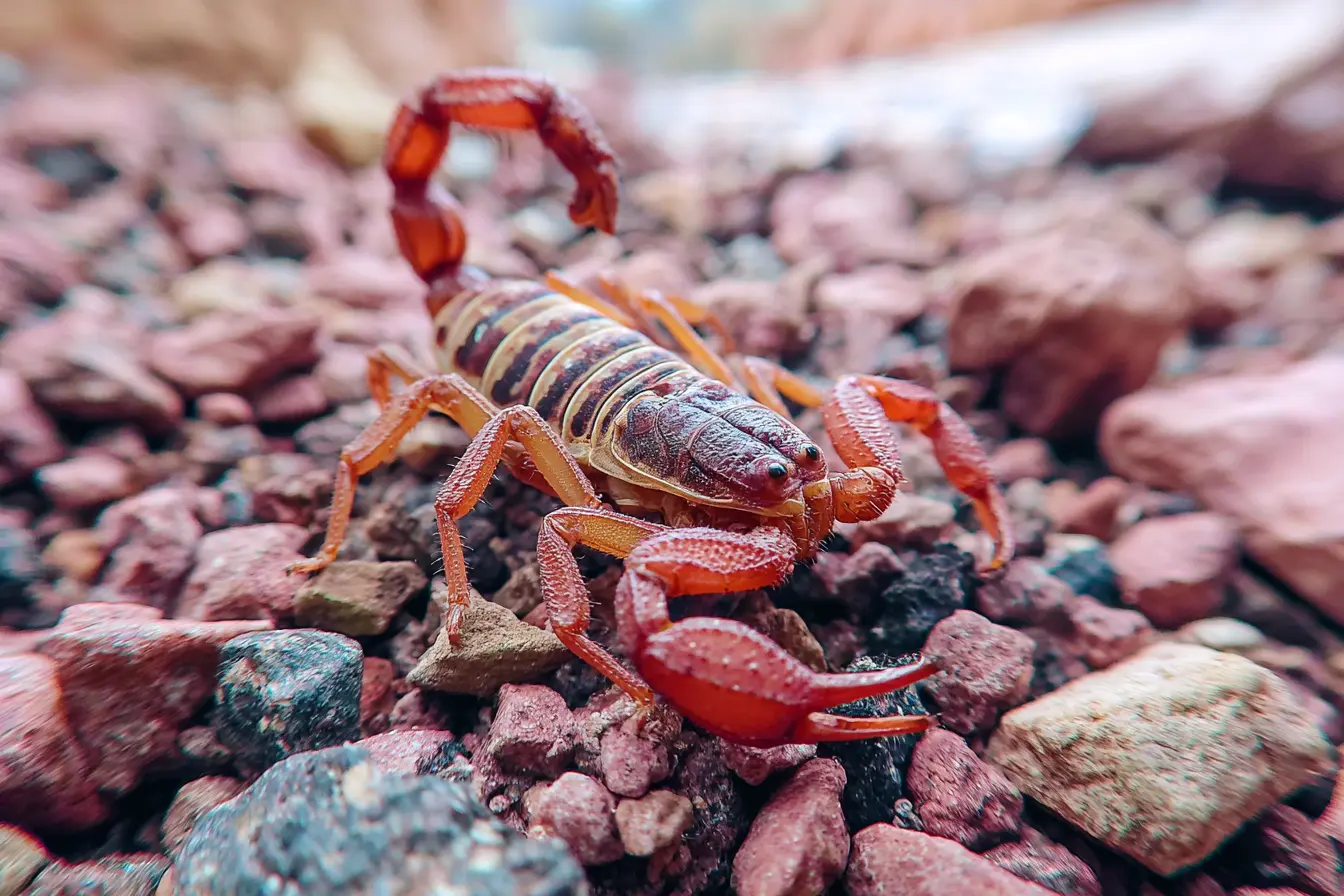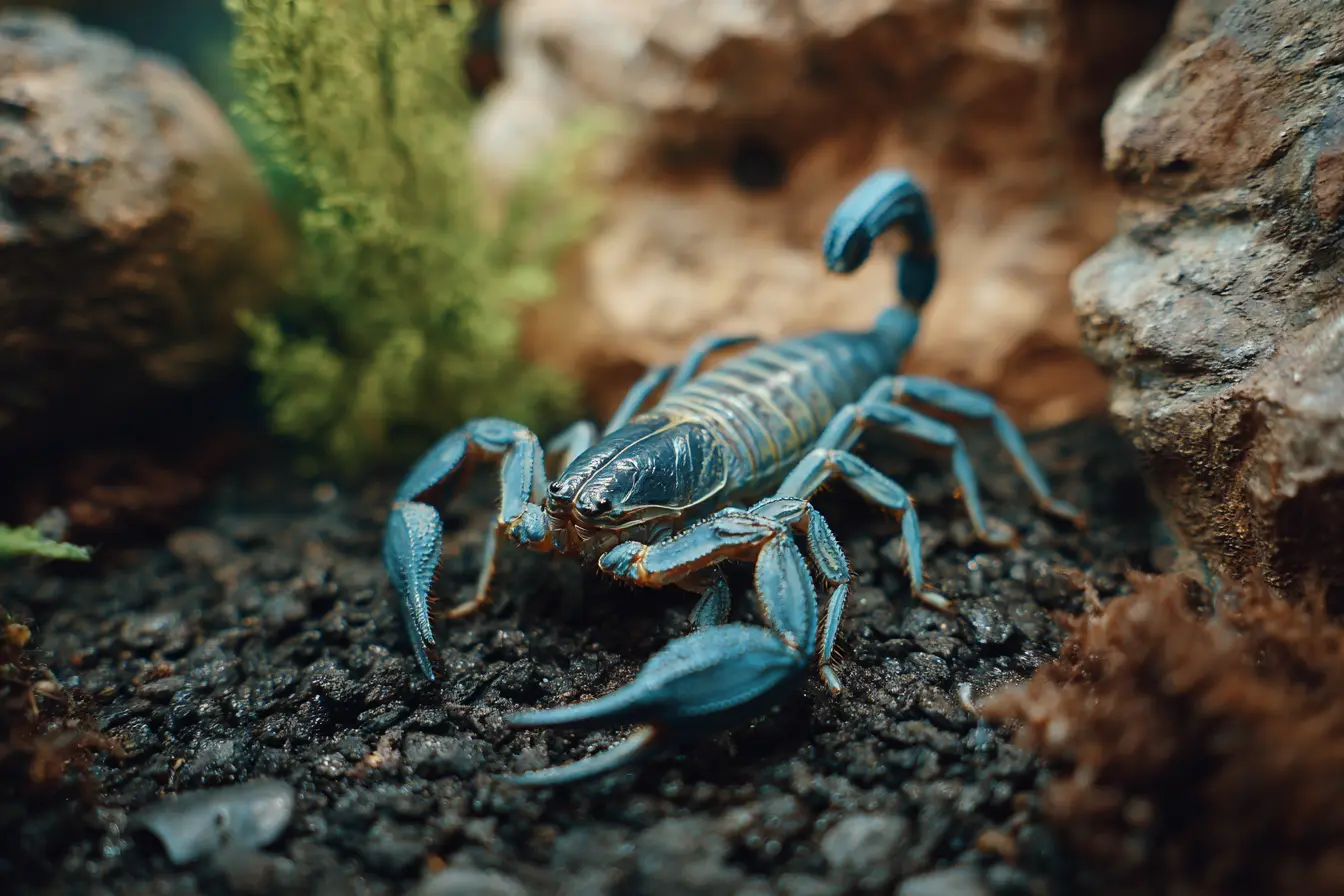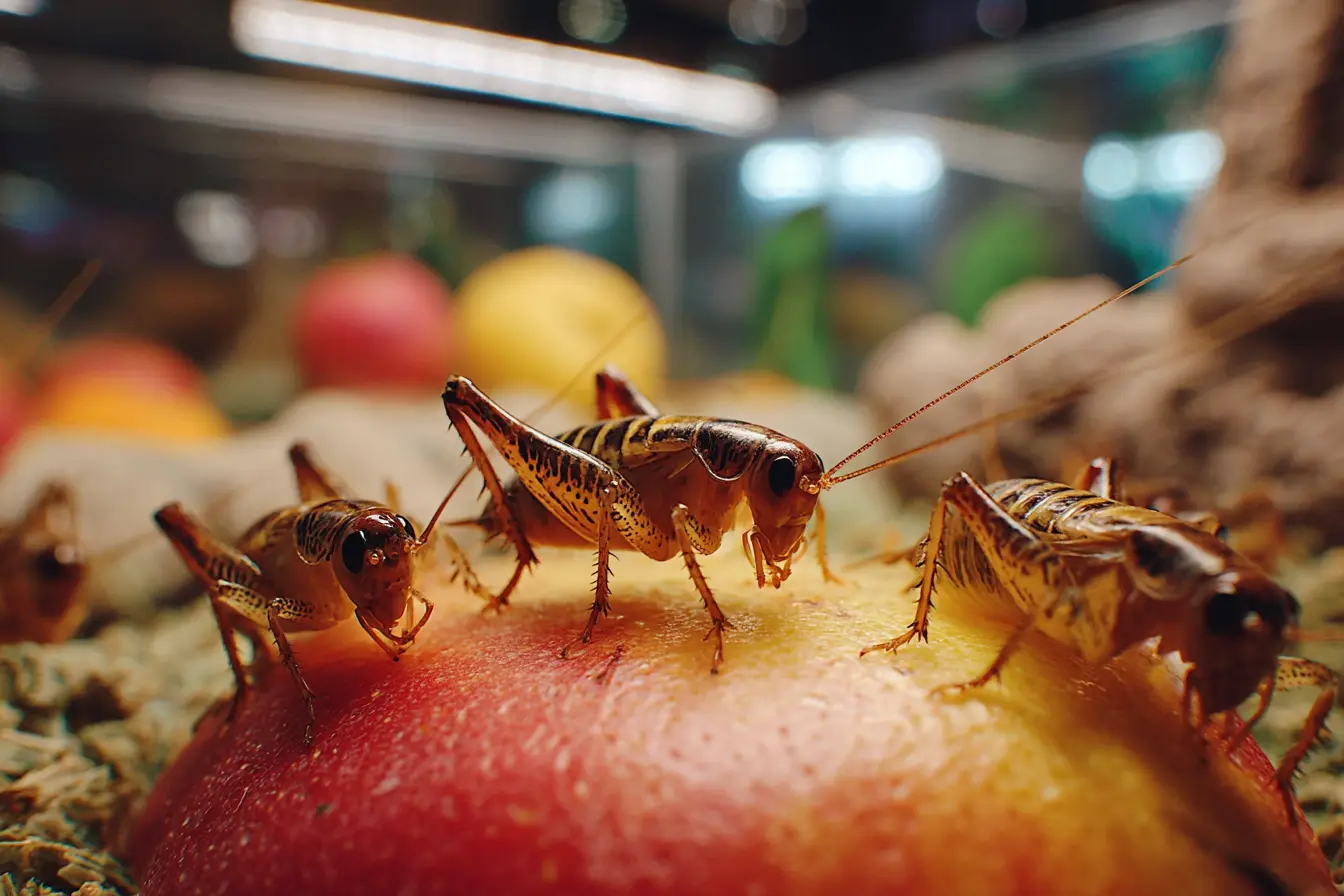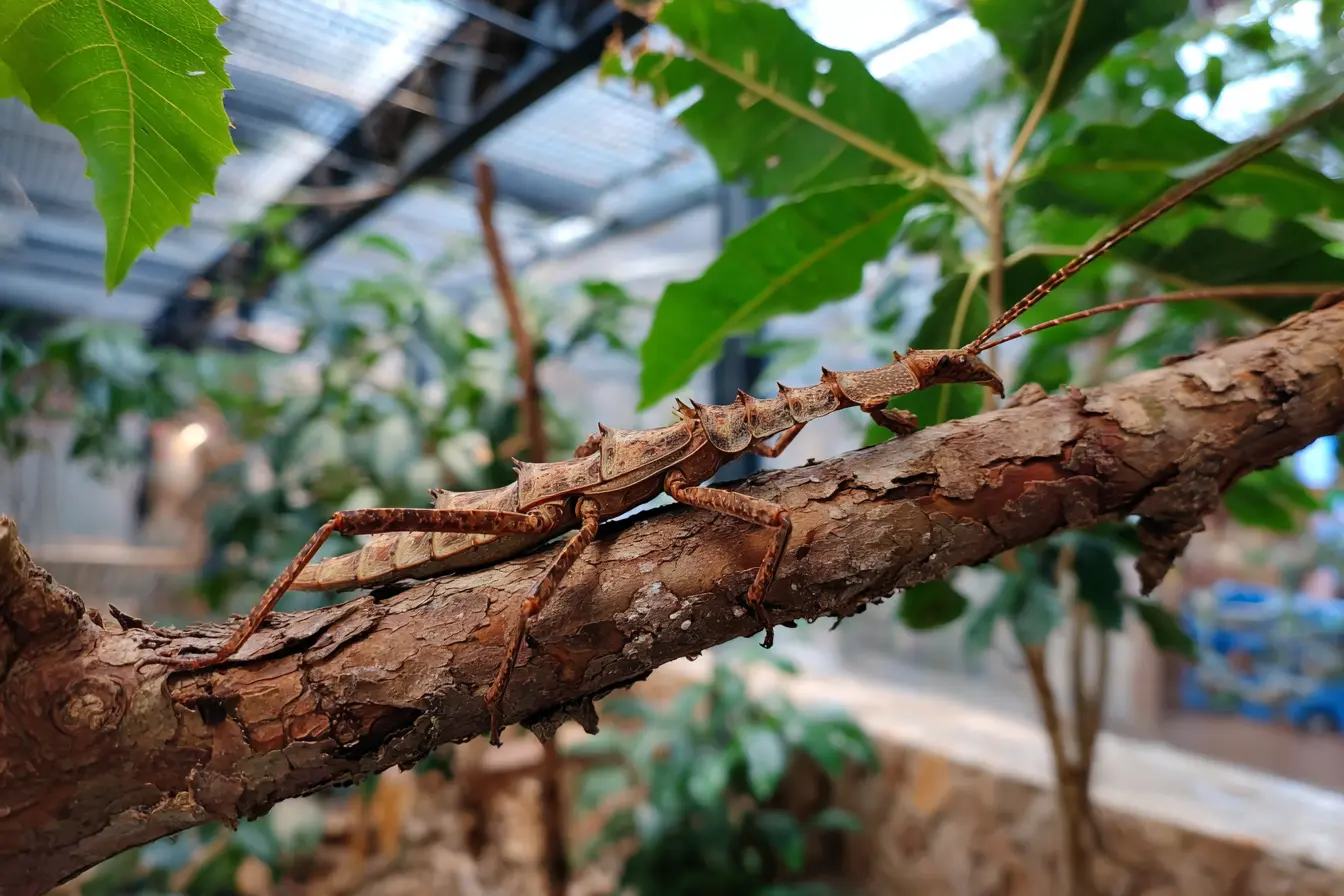
The Complete Guide to Keeping Giant Spiny Stick Insects as Pets
The Giant Spiny Stick Insect (Eurycantha calcarata) is a large, impressive species of stick insect kept by enthusiasts around the world. Native to New Guinea, this species is known for its robust build, distinctive spines, and fascinating behaviours.
This guide covers everything you need to know about keeping, feeding, and breeding Giant Spiny Stick Insects to ensure a healthy and rewarding experience.
Physical Characteristics
Giant Spiny Stick Insects are striking in both size and appearance.
- Size: Adults typically reach between 12 cm and 15 cm in length. Females are larger and heavier-bodied than males.
- Body: Thick and robust, with a rough, spiny texture for camouflage and defence.
- Colouration: Ranges from pale green as juveniles to shades of brown, olive, or dark green as adults, blending well with branches and bark.
- Legs: The legs, particularly the hind legs, are covered with sharp spines. Males have especially prominent spines used for gripping and defence.
- Sexual Dimorphism: Males are slimmer, lighter, and more active, with larger femoral spines. Females are broader, heavier, and possess a curved ovipositor (used for laying eggs).
Their rugged appearance and defensive adaptations make them very distinctive compared to more delicate stick insect species.
Why Keep a Giant Spiny Stick Insect?
Giant Spiny Stick Insects are an excellent choice for more experienced keepers or those looking for a more substantial and interactive pet.
- They have striking appearances and fascinating behaviours.
- They are relatively hardy when their needs are met.
- Their size and slow movements make them easy to observe.
- They display interesting burrowing and climbing activities.
- Breeding can be attempted successfully with proper care.
Choosing and Acquiring a Giant Spiny Stick Insect
Giant Spiny Stick Insects are available from exotic pet suppliers, specialist breeders, and online marketplaces in the UK.
When selecting individuals:
- Choose active, alert insects with no missing limbs or deformities.
- Healthy specimens should have a firm body and grasp tightly onto surfaces.
- Nymphs (juveniles) are easier to acclimatise to new enclosures, but adults are equally hardy if transported carefully.
Housing and Enclosure Setup
Providing the correct enclosure is crucial for the wellbeing of Giant Spiny Stick Insects.
Enclosure Type
- A large glass terrarium, plastic tank, or fine mesh cage is suitable.
- Excellent ventilation is essential to prevent mould and maintain air quality.
Enclosure Size
- Minimum dimensions: 60 cm tall × 40 cm wide × 40 cm deep for a pair or small group.
- Taller enclosures are preferred to accommodate climbing behaviour.
Substrate
- Use deep, damp substrate such as coconut fibre, peat moss, or organic soil.
- Substrate depth should be at least 10 cm to allow burrowing, especially for egg-laying females.
Furnishings
- Provide sturdy branches, logs, bark, and live or artificial plants for climbing and hiding.
- Large cork bark slabs work well as resting areas.
- Hollow logs or half-buried tubes create excellent hiding spots.
Temperature and Humidity
- Ideal daytime temperature: 24°C to 28°C.
- Night-time temperatures can drop to around 20°C but not lower.
- Maintain high humidity at around 70% to 80%.
- Mist the enclosure lightly once or twice a day to maintain humidity without waterlogging the substrate.
Lighting
- No special lighting is required; ambient room lighting is sufficient.
- Avoid placing the enclosure in direct sunlight to prevent overheating.
Feeding and Nutrition
Giant Spiny Stick Insects are herbivores and require a consistent diet of fresh leaves.
Suitable Food Plants
- Bramble (blackberry)
- Raspberry leaves
- Oak leaves
- Hazel
- Rose leaves
- Ivy (in small amounts)
Bramble is often the staple food for captive individuals, being readily available year-round in the UK.
Feeding Frequency
- Provide fresh leaves at all times.
- Replace wilted leaves every few days to ensure a continuous food supply.
Feeding Tips
- Place food stems in water-filled containers to keep them fresh for longer.
- Cover the container opening to prevent drowning accidents.
- Always wash foraged leaves to remove any pesticides or pollutants.
Handling a Giant Spiny Stick Insect
Giant Spiny Stick Insects can be handled, but caution is advised due to their strong legs and defensive spines.
- Allow the insect to climb onto your hand rather than picking it up.
- Handle calmly and slowly to avoid stressing the insect.
- Avoid touching the underside, where sharp spines are located.
- Males may attempt to grip more tightly and can deliver a slight pinch if startled.
Moulting and Growth
Giant Spiny Stick Insects moult several times as they grow, shedding their exoskeleton to reach adult size.
Moulting Stages
- They undergo approximately five to six moults before maturity.
- Each stage between moults is called an instar.
Signs of an Upcoming Moult
- Reduced appetite.
- Hanging motionless upside down.
- A duller, more swollen appearance.
After Moulting
- Do not handle or disturb freshly moulted insects.
- Maintain high humidity to aid successful hardening of the new exoskeleton.
- Allow at least 24–48 hours before handling or moving the insect after moulting.
Breeding Giant Spiny Stick Insects
Breeding Giant Spiny Stick Insects is possible in captivity with appropriate conditions.
Sexing
- Males are smaller, slimmer, and more active, with noticeable enlarged femoral spines on their hind legs.
- Females are larger, bulkier, and possess a curved ovipositor for laying eggs.
Mating Process
- Mature males will actively seek out females.
- Mating pairs can stay connected for several hours.
Egg-Laying
- Females bury their eggs into the substrate using their ovipositor.
- Eggs are large, dark, and robust.
Incubation
- Eggs should remain in moist substrate at around 24°C to 26°C.
- Hatching can take 4 to 9 months depending on temperature.
Hatchling Care
- Newly hatched nymphs are delicate and require soft young leaves such as bramble.
- Provide fine twigs and branches for climbing.
Common Health Issues
Dehydration
- Caused by insufficient humidity.
- Symptoms include shrivelling and inactivity.
- Remedy by misting the enclosure more regularly.
Failed Moulting
- Inadequate humidity or climbing surfaces can result in fatal moulting problems.
- Maintain proper conditions and avoid disturbing insects during moulting.
Limb Loss
- Spiny stick insects can lose limbs due to accidents or stress.
- Nymphs can regrow limbs over successive moults; adults cannot.
Injuries from Handling
- Handle gently and minimise unnecessary handling to prevent injury from falls or stress.
Ethical Considerations
- Never release Giant Spiny Stick Insects into the wild.
- Ensure you can provide long-term care before breeding, as hatchlings require commitment.
- Always source insects from reputable breeders and avoid wild-caught specimens.
Legal Considerations in the UK
- Giant Spiny Stick Insects are legal to own and breed in the UK.
- No specific licences are required.
- However, responsible pet ownership is essential to avoid ecological impact or welfare issues.
Final Thoughts
The Giant Spiny Stick Insect is an extraordinary pet that rewards careful keepers with its impressive size, fascinating behaviour, and unique defensive adaptations. With a spacious, humid enclosure, a diet of fresh leaves, and careful handling, you can enjoy the remarkable world of these amazing insects and, if desired, even successfully breed them at home.
Contents
- Physical Characteristics
- Why Keep a Giant Spiny Stick Insect?
- Choosing and Acquiring a Giant Spiny Stick Insect
- Housing and Enclosure Setup
- Feeding and Nutrition
- Handling a Giant Spiny Stick Insect
- Moulting and Growth
- Breeding Giant Spiny Stick Insects
- Common Health Issues
- Ethical Considerations
- Legal Considerations in the UK
- Final Thoughts
Tags
Vets near you
Speciality vets
- Aquatics vet specialists
- Birds vet specialists
- Camelids vet specialists
- Cats vet specialists
- Cattle vet specialists
- Deer vet specialists
- Dogs vet specialists
- Equines vet specialists
- Exotic vet specialists
- Goats vet specialists
- Pigs vet specialists
- Poultry vet specialists
- Sheep vet specialists
- Small Mammals vet specialists
- Wild vet specialists
